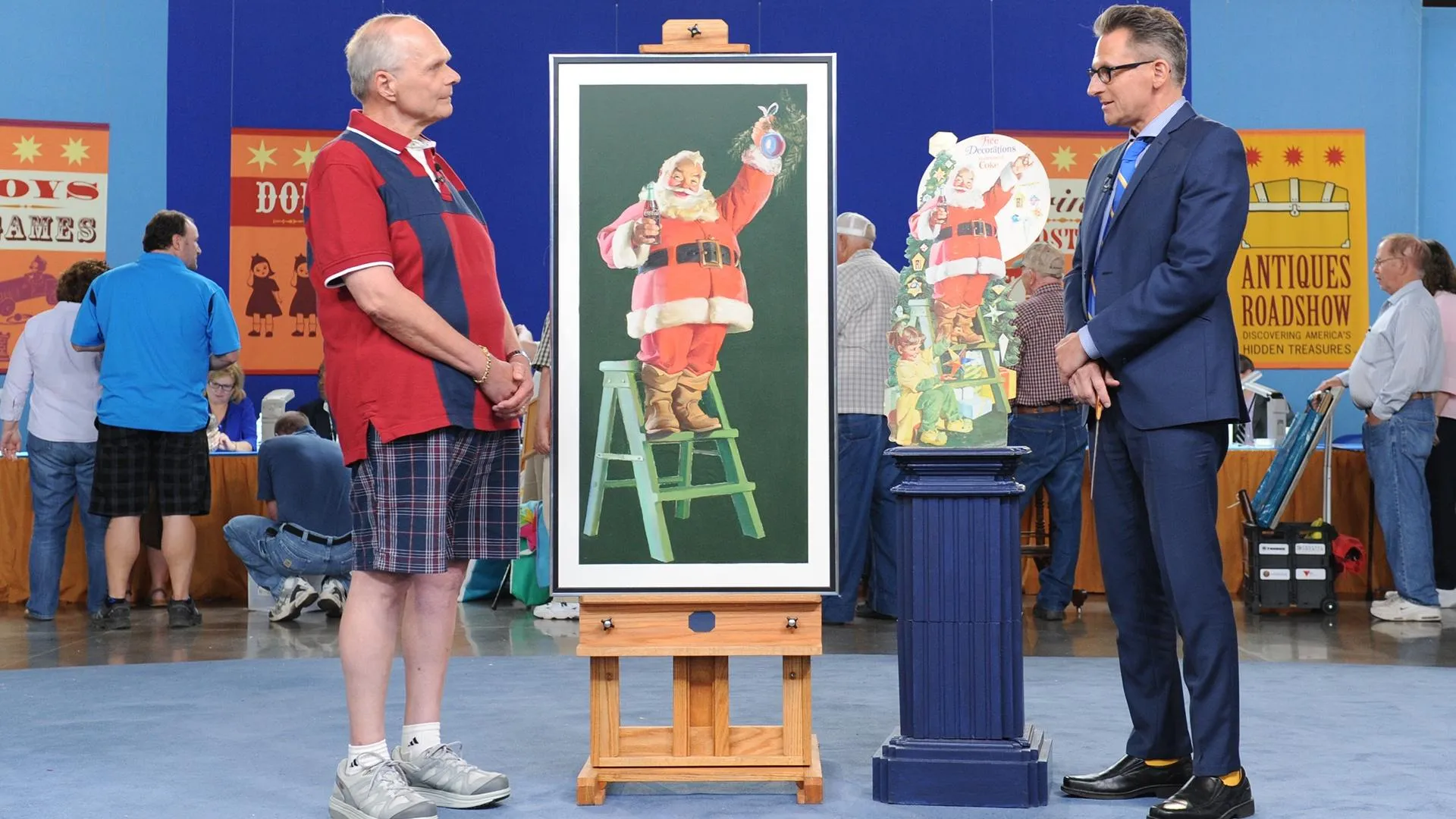APPRAISER: I have a feeling you might be Norwegian.
GUEST: Yes, I am, 100% and proud of it.
APPRAISER: This instrument that you brought in is from Norway, isn't it?
GUEST: Yes, it is.
APPRAISER: What can you tell me about it?
GUEST: Well, it belonged to my great-grandfather, who was born in Norway in 1840. He emigrated to this country in 1905 when he was 65 years old. And I believe this is called a Hardanger fiddle.
APPRAISER: That's right.
GUEST: That's about all I know about it.
APPRAISER: I cannot tell you how thrilled I was to see this instrument when you took it out of the blanket that you brought it in in. And I have been waiting at least ten years for somebody to bring a Hardanger fiddle. The Hardanger fiddles were prized by the Norwegian people, and they were one of the few possessions that they brought with them. And they're a very particular kind of instrument that's just gorgeous to look at. So they have all the rosing around the edges, which is very typical of a certain pattern of decoration from the region of Telemark in Norway. And Telemark is to the Norwegian Hardanger fiddle as Cremona is to the violin world. Now, in the violin world, Cremona is where Stradivarius was from.
GUEST: Oh, my.
APPRAISER: So in the Hardanger fiddle world, Telemark, especially Bo, Telemark, which is where this instrument was made, is extremely important in the history of Hardanger fiddles. So notice on top, we've got the lion's head, and the lion's head is really important because it was the national symbol of Norway. Your instrument is missing some of its teeth and it's missing its tongue. The other thing that you can notice is that there's a hole at the top of the fingerboard.
GUEST: Oh, I see that.
APPRAISER: And that's so that the under strings can go down and through the bridge. What makes Hardanger fiddles unique in another way is that there should be four strings that go over the fingerboard, and that there are four strings then that go under the fingerboard and through the bridge. Those strings you never play; they just ring sympathetically.
GUEST: Oh.
APPRAISER: Now, have you ever heard this instrument played?
GUEST: No, I have not.
APPRAISER: It sounds magnificent. You really only need one of these because of the sympathetic strings. They have a huge, huge sound. Now, the fingerboard is inlaid with mother-of-pearl and with decorated bone. This pattern along the edges is also inlaid mother-of-pearl. The traditional material that was used in the instrument is bone. There is no ivory and there's no history of ivory being used in Hardanger fiddles from this period.
GUEST: Okay.
APPRAISER: Your Hardanger fiddle is made from native Norway woods. The top is of spruce, the back is of black alder. The ribs are of maple. The pegs are almost always made of apple or pear, and that's the case here as well. Do you have a sense of when this instrument was made?
GUEST: Well, I saw the label, it says 1830, and I'm wondering if that's when it was made. If so, it was made ten years before my great-grandfather was born, so either he inherited it or bought it as a used fiddle.
APPRAISER: Well, I looked at that label too, and I interpreted that date as being 1890, which makes a lot more sense to me.
GUEST: Oh, it would.
APPRAISER: So this is typical of the period of 1890 in Bo, Telemark. There is a market for these instruments. They're highly sought after. There are Hardanger fiddle societies that exist. You can go to college in Minnesota and learn how to play the Hardanger fiddle. It needs a bit of work.
GUEST: Yes.
APPRAISER: You've probably noticed there is some damage to it, and there's a crack on the back as well. As is, it has a retail value of $8,000 to $9,000.
GUEST: Oh, my goodness, wow. Well, my cousin gave it to me. She'll probably want it back now. (laughs)



